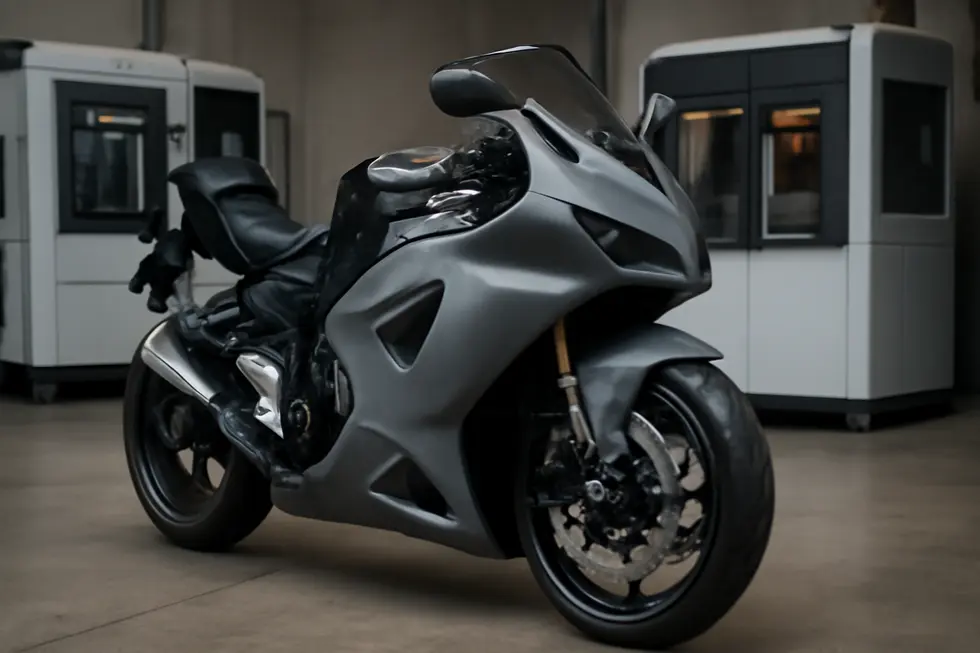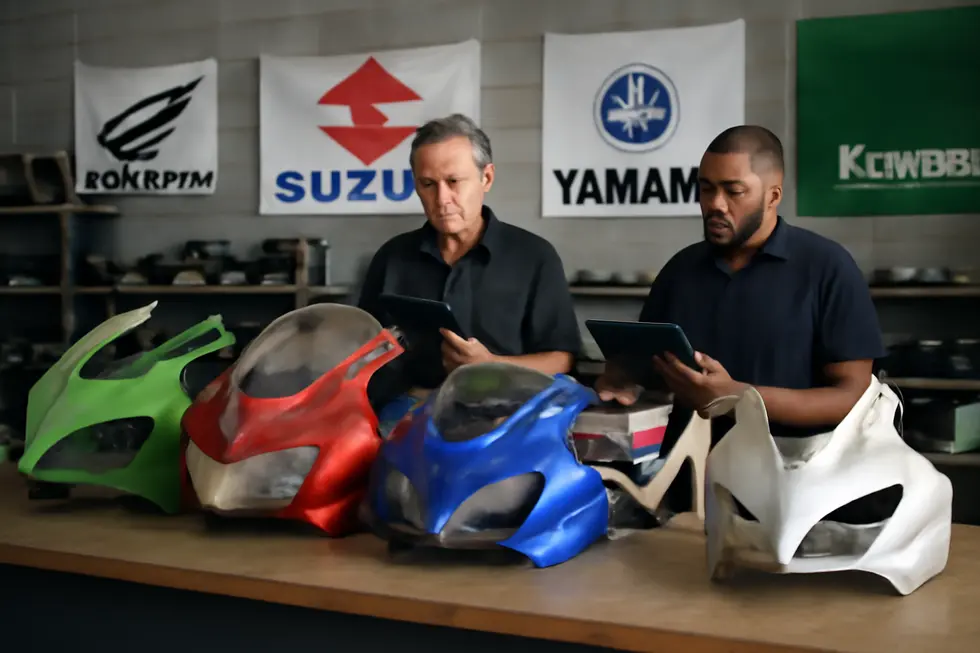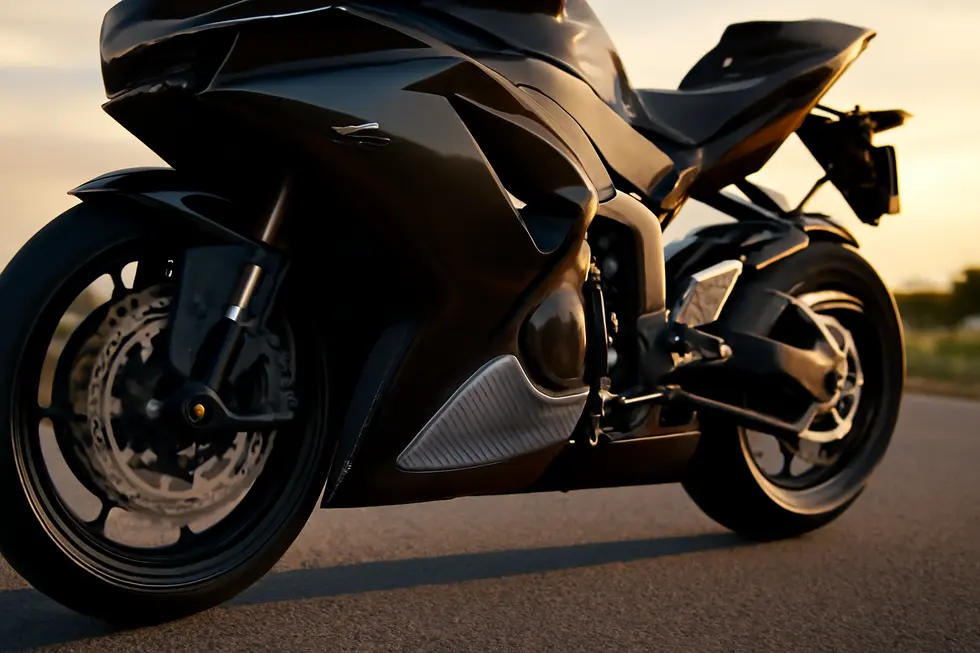Mastering Motorcycle Front Fairings: Material, Design, and Customization Insights for Business Owners
August 24, 2025 | by summitfairings
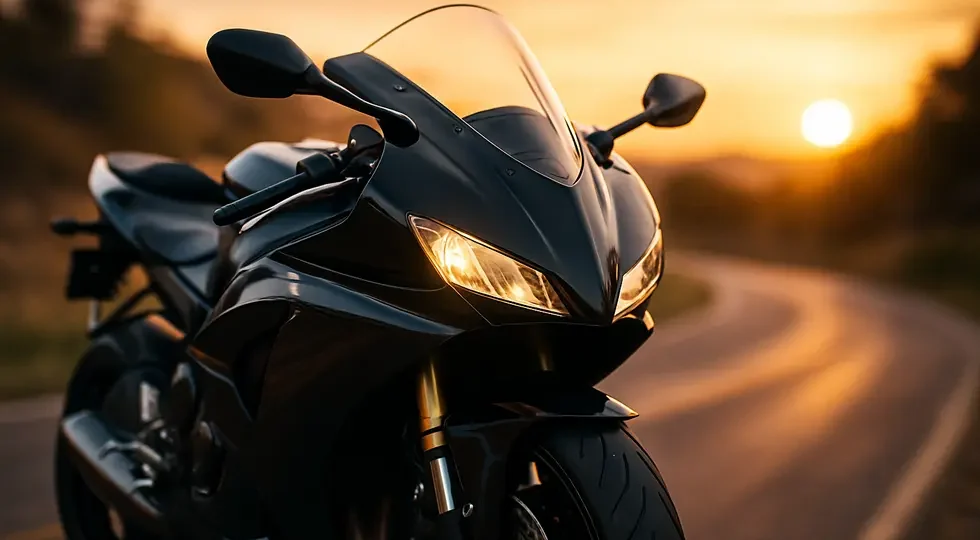
Introduction
Motorcycle front fairings stand as a pivotal element in the motorcycle industry, blending form and function to serve both riders and businesses alike. For business owners in the motorcycle aftermarket and manufacturing sectors, understanding front fairings goes beyond aesthetics—it’s about appreciating their material composition, aerodynamic design, and customization potential that drive consumer demand and influence market competitiveness. This comprehensive exploration dives deep into three essential facets: the advanced materials and manufacturing processes that guarantee durability and performance; the intricate design elements that improve rider protection and aerodynamic efficiency; and an overview of the diverse customization options available to meet various consumer needs. Together, these chapters equip business leaders with critical knowledge to make informed decisions about product offerings, quality control, and strategic inventory management, ultimately fostering growth and innovation within their enterprises.
Tables of Contents
Chapter 1: Material Composition and Manufacturing Techniques Behind Motorcycle Front Fairings
- How ABS Plastic and Injection Molding Shape Durable, Aerodynamic Motorcycle Front Fairings
- Advanced Carbon Fiber Composites: Enhancing Performance and Aerodynamics in Front Fairings
- Durability, Heat, and UV Resistance: Evaluating Carbon Fiber and ABS Plastic in Front Fairing Materials
- Balancing Performance and Cost: Economic Impact of Materials and Manufacturing in Motorcycle Front Fairings
- Innovations and Precision in Material Selection and Fabrication Techniques for Front Fairings
Chapter 2: Design and Functional Aspects of Motorcycle Front Fairing
- Streamlining Speed and Stability: Aerodynamic Innovations in Motorcycle Front Fairings
- Balancing Material Innovation and Structural Strength in Front Fairing Design
- Seamless Integration of Advanced LED Lighting and Safety in Front Fairing Design
- Seamless Integration and Personalized Mounting: Elevating Motorcycle Front Fairing Design
- Enhancing Rider Comfort and Convenience Through Advanced Front Fairing Design
Chapter 3: Varieties and Customization Options of Motorcycle Front Fairing
- Distinctive Front Fairing Designs: Exploring Full, Half, and Batwing Varieties for Performance and Style
- Dynamic Customization of Motorcycle Front Fairings: Material Choices, Color Finishes, and Personalized Styling
- Innovations in Materials and Technology Shaping Front Fairing Customization
- Economic Dynamics and Market Shifts Driven by Customization in Motorcycle Front Fairings
- Cultural Currents Shaping the Aesthetic and Functional Evolution of Motorcycle Front Fairings
Chapter 1: Material Composition and Manufacturing Techniques Behind Motorcycle Front Fairings
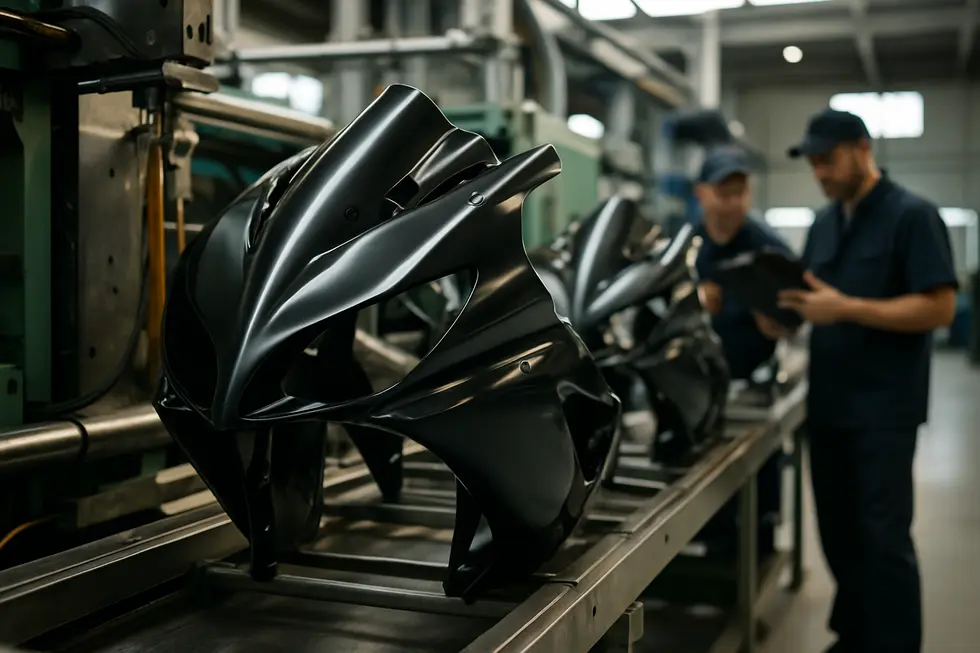
1. How ABS Plastic and Injection Molding Shape Durable, Aerodynamic Motorcycle Front Fairings
Motorcycle front fairings rely predominantly on ABS plastic due to its unique balance of strength, flexibility, and impact resistance. ABS, or Acrylonitrile Butadiene Styrene, is a thermoplastic polymer favored in automotive components because it is lightweight yet tough enough to endure minor impacts and road debris without cracking. This resilience helps protect essential parts and maintain the fairing’s structural integrity over prolonged use.
The preferred manufacturing technique for shaping ABS front fairings is injection molding. This process involves heating ABS pellets until molten and injecting the material under high pressure into precision-engineered steel molds. These molds are crafted to exact dimensions, enabling the production of complex contours, aerodynamic vents, and integrated mounting points in a single, seamless part. Injection molding ensures consistent thickness and dimensional stability, which are vital for both structural performance and aesthetic appeal.
One significant advantage of injection molding is its efficiency in mass production. Motorcycles ranging from sportbikes to cruisers benefit from fairings produced at scale with uniform quality and finish. The smooth surface of ABS also provides an excellent base for painting and UV-resistant coatings, preserving the vibrant appearance riders expect. This combination of durability and finish quality meets both functional and stylistic requirements.
The versatility of ABS injection molding supports OEM manufacturing as well as aftermarket customization, allowing for tailored designs that boost aerodynamics and rider protection. Given these attributes, ABS front fairings are a staple choice, blending lightweight performance with manufacturing practicality.
For more insights into the variety of motorcycle fairings and their construction, explore this resource on motorcycle fairings.
Technical material standards like ASTM D638 highlight ABS’s flexural modulus near 2 GPa, confirming its stiffness aligns well with the demands placed on fairing panels.
2. Advanced Carbon Fiber Composites: Enhancing Performance and Aerodynamics in Front Fairings
Carbon fiber composites have emerged as a premier material choice for motorcycle front fairings, especially within the realm of high-performance and racing motorcycles. Characterized by an exceptional strength-to-weight ratio, carbon fiber front fairings weigh roughly half as much as equivalent steel parts, commonly around 1.2 kg, significantly lowering the motorcycle’s overall mass. This weight reduction translates into improved acceleration, nimble handling, and greater fuel efficiency, a vital edge for sportbike enthusiasts.
The production of carbon fiber fairings involves complex layering of woven carbon fibers embedded within resin matrices. Processes such as prepreg layup and automated curing ensure the resulting components achieve impressive structural stiffness and durability without compromising on weight. These manufacturing innovations not only boost mechanical properties but also allow precise shaping to optimize aerodynamic performance, typically reducing drag by about 20%. This aerodynamic refinement improves top speeds and rider comfort by minimizing wind turbulence.
Beyond functional merits, carbon fiber fairings offer significant aesthetic versatility. High-gloss finishes, customized colors, and refined surface textures enhance visual appeal and allow riders to personalize their motorcycles’ appearance. Despite these advantages, carbon fiber fairings tend to be costlier and require expert installation and repair, reflecting the technical demands of their fabrication and maintenance.
Comparatively, ABS plastic fairings offer cost-effective durability but lack the performance-driven benefits of carbon fiber. For riders prioritizing lightweight design and aerodynamic efficiency, carbon fiber remains the preferred choice. Leading manufacturers employ aerospace-grade technology to produce these composites, while computational fluid dynamics (CFD) tools further refine fairing shapes, exemplified in iconic motorcycle models optimized for speed and rider protection.
For enthusiasts seeking cutting-edge front fairing solutions that balance strength, weight, and style, carbon fiber composites represent an advanced material pinnacle within motorcycle fairing manufacturing.
Explore more about premium fairing options and the latest advancements in motorcycle fairings at Summit Fairings.
Source: https://www.alibaba.com/product-introduction/Customized-colors-carbon-fiber-MIO-sporty_1600876489225.html
3. Durability, Heat, and UV Resistance: Evaluating Carbon Fiber and ABS Plastic in Front Fairing Materials
Motorcycle front fairings must endure various stresses while maintaining performance and appearance, making material choice critical. Carbon fiber composites and ABS plastic stand as the leading materials, each presenting distinct advantages and limitations in durability, heat tolerance, and UV resistance.
Carbon fiber fairings are coveted for their exceptional strength-to-weight ratio, offering superior stiffness and durability. Their manufacturing involves methods like forging chopped carbon fiber with resin under intense pressure, producing blocks with isotropic strength that enhance precision and long-term resilience. These fairings excel under heat, demonstrating high thermal stability and minimal expansion, ideal for high-speed scenarios where engine heat and frictional forces prevail. However, carbon fiber’s natural susceptibility to UV degradation mandates specialized coatings to preserve surface integrity and color vibrancy over time.
Conversely, ABS plastic panels provide a balanced combination of robustness and affordability. Their impact resistance and moderate heat tolerance suit everyday riding conditions, though they are heavier and less rigid than carbon fiber, which can affect aerodynamic efficiency and durability under high stress. Notably, ABS exhibits superior intrinsic UV resistance, reducing the likelihood of fading or degradation without added treatments. Its easier manufacture and repair processes make ABS the go-to choice for standard and cost-conscious applications.
Manufacturers often weigh these material properties against a motorcycle’s intended use and rider priorities. Performance-focused models benefit from carbon fiber’s lightweight strength and heat endurance despite higher costs and installation complexity. Meanwhile, ABS plastic fairings favor riders seeking cost-effective, naturally UV-stable solutions with straightforward maintenance.
For those interested in exploring the comprehensive offerings of durable and visually appealing fairing options, this resource on affordable motorcycle fairings provides valuable insights. Further manufacturing details can be found in the Alibaba carbon fiber fairings overview here.
4. Balancing Performance and Cost: Economic Impact of Materials and Manufacturing in Motorcycle Front Fairings
The choice of materials and manufacturing techniques for motorcycle front fairings plays a pivotal role in balancing performance benefits with economic practicality. Two dominant materials—carbon fiber composites and ABS plastic—illustrate this trade-off clearly. Carbon fiber is prized in high-performance and racing circles for its exceptional lightness, weighing approximately 1.2 kg, which is about half the weight of steel. This lightweight nature, combined with a roughly 20% drag reduction, enhances both speed and fuel efficiency. However, these advantages come with a high price point. Carbon fiber production demands labor-intensive processes such as layering, curing with autoclaves, and precise hand lay-up or automated fiber placement. These steps drive up manufacturing costs and require skilled installation, limiting its viability in mass production or budget-conscious markets.
Conversely, ABS plastic front fairings offer a cost-efficient alternative suitable for the broad consumer market. Manufactured primarily through injection molding, ABS fairings benefit from fully automated, scalable production that significantly lowers per-unit costs. The material offers robust impact resistance and durability, although it is heavier and less aerodynamic than carbon fiber. This makes ABS plastic ideal for OEM and aftermarket fairings where affordability and ease of installation are priorities.
Economic considerations shape manufacturers’ decisions: carbon fiber suits low-volume, performance-driven segments, while ABS plastic aligns with mass-market demands. The balance lies in choosing materials and methods that meet targeted performance specifications without compromising budget or production scalability. The detailed comparison of these options underscores the strategic importance of manufacturing choices in optimizing both cost and quality.
For further insights into material benefits and economic trade-offs in front fairing manufacturing, the Alibaba listing on customized carbon fiber motorcycle fairings provides valuable data. Additionally, riders and manufacturers can explore a wide range of affordable and quality fairing options at Summit Fairings’ resource hub.
5. Innovations and Precision in Material Selection and Fabrication Techniques for Front Fairings
Motorcycle front fairings represent a sophisticated blend of advanced materials and modern manufacturing methods designed to optimize performance, durability, and aesthetics. Primarily, fairings are crafted from carbon fiber composites and ABS plastic, each chosen for their distinctive benefits aligned with motorcycle type and rider priorities. Carbon fiber is prized in high-performance and racing scenarios due to its exceptional lightweight properties—approximately 1.2 kilograms—and outstanding strength-to-weight ratio. This material notably reduces aerodynamic drag by nearly 20%, translating into improved speed, fuel efficiency, and handling. However, carbon fiber demands meticulous craftsmanship during the layup and curing process, involving layering sheets with resin and applying controlled heat and pressure to achieve structural integrity. Its sensitivity to UV exposure and the complexity of repairs present trade-offs despite its premium advantages.
Conversely, ABS plastic dominates mass production settings, favored for its robustness, impact resistance, and cost-effectiveness. Produced via precise injection molding, ABS fairings achieve consistent quality and detailed form, often enhanced by multi-layer clear coatings that improve UV resistance and surface durability. This balance of strength, flexibility, and manufacturing efficiency makes ABS ideal for widespread use across motorcycle models.
Emerging fabrication technologies, particularly 3D printing, enable rapid prototyping and bespoke fairing designs with reduced material waste and accelerated turnaround. While this method fosters customization and complex shapes, post-processing is essential to meet required strength and finish levels. Integrating advanced aerodynamic modeling into design phases further refines front fairings, reducing drag and turbulence to elevate overall motorcycle performance.
Quality control remains integral, with rigorous evaluations on impact resistance, UV stability, and dimensional accuracy, complying with industry standards that govern both consumer and competitive motorcycle applications. This blend of material science, innovative manufacturing, and stringent inspection culminates in front fairings that enhance rider protection, style, and functionality. Exploring options at a comprehensive resource like Summit Fairings reveals a spectrum of solutions balancing these advanced techniques and materials.
Chapter 2: Design and Functional Aspects of Motorcycle Front Fairing
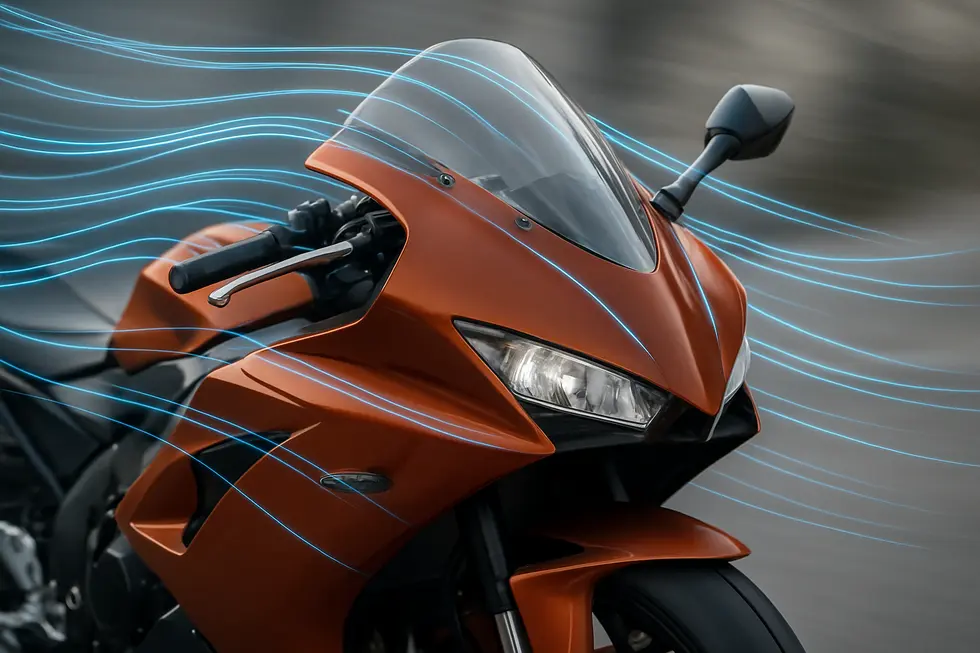
1. Streamlining Speed and Stability: Aerodynamic Innovations in Motorcycle Front Fairings
The motorcycle front fairing plays a crucial role in balancing aesthetics with aerodynamic performance, fundamentally shaping how air interacts with both bike and rider. Primarily, the fairing is sculpted to reduce drag—a force that resists forward motion—by presenting a smooth, enclosed contour that minimizes turbulence around the motorcycle’s frontal area. This aerodynamic refining enables improved top speeds and enhanced fuel efficiency, pivotal for sportbikes and racing models aiming to slice through the air effortlessly.
Beyond drag reduction, modern front fairings integrate sophisticated aerodynamic features such as winglets, which generate downforce at high speeds to increase front wheel grip. For instance, certain high-performance motorcycles leverage winglets that produce significant downforce at velocities exceeding 180 mph, pressing the front tire firmly against the road. This results in greater stability, improved handling during aggressive cornering, and safer braking performance, effectively reducing the risks associated with high-speed manoeuvres.
Airflow management extends to cooling as well. The fairing’s design strategically channels air toward radiators and oil coolers while discreetly routing hot air away. This precise control optimizes engine temperature without compromising aerodynamic efficiency, melding function and form seamlessly. Additionally, front fairings create a buffer against wind buffeting for the rider by shaping a calmer airflow zone, reducing fatigue on extended rides and improving comfort.
Compact, sleek profiles characterize racing fairings, employing minimized air ducts and streamlined shapes tailored to circuit demands. Emerging technologies further enhance these designs with active aerodynamic elements that adjust airflow dynamically, responding to changing speeds and conditions to maximize performance.
In essence, the front fairing unites advanced aerodynamic principles with practical benefits, championing speed, control, and rider protection. For enthusiasts interested in exploring diverse front fairing options that marry style with function, a wealth of resources and kits can be found that emphasize these aerodynamic qualities, elevating both the visual and performance aspects of motorcycles. For more insights into motorcycle fairings, explore the explore the best motorcycle fairings at Summit Fairings.
For a detailed breakdown of how race motorcycles optimize aerodynamics through front fairing design, see this comprehensive dive: https://livingwithgravity.com/red-dot-if-award-winning-new-panigale-v4-ducatis-design-mastery/
2. Balancing Material Innovation and Structural Strength in Front Fairing Design
Motorcycle front fairings demand a sophisticated balance between material innovation and structural integrity to optimize performance and rider safety. Key to this balance is the choice of materials, which must provide lightweight properties without sacrificing durability. The front fairing endures aerodynamic pressures at high speeds, impacts from road debris, and continuous weather exposure. As such, the material selected influences how well these challenges are met while maintaining the fairing’s functional roles.
Among common materials, ABS plastic stands out in street motorcycles due to its flexibility, impact resistance, and cost-effectiveness, enabling resilience under everyday use while facilitating easier repairs. Fiberglass, while heavier, offers notable strength and reparability, making it a durable option for riders valuing longevity and ease of maintenance. Carbon fiber composites elevate performance with exceptional strength-to-weight ratios, favored in racing applications where minimizing weight is crucial to speed and agility.
Structural design intricately works with material properties to enhance aerodynamic efficiency. Integrated windscreens not only streamline airflow but reduce rider fatigue by deflecting wind and weather. The fairing’s shape is carefully molded to lessen drag, improve stability, and provide sturdy mounting points for accessories without compromising integrity. Race-oriented fairings often envelop more of the motorcycle’s contours, maximizing aerodynamic benefits and protection, whereas street fairings balance coverage with practicality and impact tolerance.
Choosing the right combination of material and structural design tailors the front fairing’s functionality to its intended use—whether aggressive track performance or durable daily riding. This approach ensures that riders enjoy improved speed, protection, and comfort without overburdening the motorcycle’s weight or compromising durability.
For further insights on front fairing designs and materials, explore the detailed resources available on Summit Fairings’ comprehensive guide.
3. Seamless Integration of Advanced LED Lighting and Safety in Front Fairing Design
Modern motorcycle front fairings have evolved into sophisticated components that combine aerodynamic finesse with integrated lighting and safety features. These fairings embed full LED lighting systems directly within their structure, enhancing visibility and rider protection while maintaining sleek, uninterrupted lines. Incorporating daytime running lights (DRL), sequential turn signals, and hazard lights, these LEDs are engineered to boost conspicuity both day and night, reducing the risk of accidents by clearly communicating rider intentions.
The design process employs computational fluid dynamics (CFD) to optimize airflow, balancing aerodynamic efficiency with thermal management. Vent openings are carefully positioned to ensure adequate cooling even where lighting elements are flush-mounted, preventing overheating without sacrificing streamlined shapes. This meticulous approach reduces wind buffeting, elevating rider comfort on extended journeys.
Advanced lighting technologies like switchback turn signals combine white DRLs and amber indicators within a single unit, maximizing attention from surrounding traffic. The sequential pattern of LED turn signals offers a dynamic, flowing visual cue far superior to traditional blinking lights, improving both style and function. Weather-resistant ABS plastic materials with UV protection guarantee durability and color retention, ensuring these components endure harsh environmental conditions without degradation.
By embedding multi-functional LED lights into aerodynamically optimized fairings, manufacturers successfully unite form and function. Riders benefit from enhanced safety through improved lighting visibility and clearer signaling, all while enjoying the refined appearance and reduced wind resistance. For a comprehensive look at diverse fairing options supporting these innovations, this source provides valuable insights into high-quality motorcycle fairings and the latest design trends: Explore the Best Motorcycle Fairings.
This synthesis of lighting technology and aerodynamic design marks a pivotal advancement in motorcycle front fairing, elevating both rider security and aesthetic appeal in a harmonious package.
[1] Source detailing integrated lighting and aerodynamic considerations.
4. Seamless Integration and Personalized Mounting: Elevating Motorcycle Front Fairing Design
Motorcycle front fairings offer riders a unique chance to blend function with personal style through advanced customization and precise mounting techniques. Customization extends far beyond appearance, encompassing choices like windshield height, shape, and tint. These adjustments not only tailor the rider’s wind protection and comfort but also complement the design aesthetic, as exemplified by versatile fairing setups that harmonize paint schemes with varying windshield options.
Materials and finishes become a canvas for creativity. From custom paintwork to vinyl wraps with metallic sheens, riders transform their motorcycles into personal statements without compromising durability or performance. Modern fairings integrate sophisticated technology seamlessly, such as embedded LED lighting systems that enhance visibility and style while built-in speakers elevate the riding experience without cumbersome external devices.
The foundation of effective customization lies in meticulous mounting techniques. Stainless steel brackets ensure a stable, corrosion-resistant foundation, securing the fairing firmly under diverse riding conditions. Each fairing is model-specific, engineered to align perfectly with the motorcycle’s contours, thereby preserving aerodynamic efficiency and the bike’s original design lines. This attention to detail is vital, as seen in aerodynamic advancements facilitated by computational fluid dynamics, which fine-tune airflow around the fairing for reduced drag and improved rider comfort.
Moreover, innovative customization sometimes involves relocating controls or adopting flush-mounted hardware to maintain clean lines and ergonomic function. Such integration exemplifies the balance between personal expression and mechanical precision. More insights into choosing and customizing these components can be found in detailed discussions on explore the best motorcycle fairings.
Together, these tailored elements and robust mounting solutions redefine how front fairings contribute not only to a motorcycle’s aesthetics but also to its aerodynamic performance and rider satisfaction.
5. Enhancing Rider Comfort and Convenience Through Advanced Front Fairing Design
The motorcycle front fairing plays a pivotal role in elevating rider comfort and convenience by expertly managing airflow and integrating ergonomic principles. By effectively deflecting wind, the fairing reduces the relentless blast riders face, especially at high speeds. This wind protection lessens handlebar buffeting and greatly diminishes rider fatigue on long journeys. Innovative designs often incorporate features like triple splitstream vents, which channel airflow intelligently to minimize turbulence and maintain stability, enhancing overall riding ease.
Ergonomics are carefully considered in the fairing’s shape and mounting to support rider posture. Whether aiming for a sporty, aggressive stance or a more relaxed position, the front fairing accommodates varying handlebar configurations and riding styles. This thoughtful design reduces strain on the rider’s back, neck, and arms, promoting better control and endurance. Moreover, modern fairing kits come pre-drilled with precise bolt patterns, allowing easy installation that guarantees a perfect fit without compromising structural integrity or aesthetics.
Customization further enhances convenience and personal connection to the motorcycle. Riders can choose from an array of finishes—glossy, matte, or carbon fiber textures—and add personalized graphics, race numbers, or logos to reflect individual style. Some aftermarket fairings even integrate practical accessories such as discreet cup holders for touring riders, blending functionality with design seamlessly.
Through these features, front fairings do more than improve aerodynamic efficiency; they thoughtfully enhance the physical and sensory riding experience, ensuring protection, comfort, and personalized convenience for a genuinely engaging ride.
For those interested in exploring a variety of quality options that balance design, comfort, and customization, you can discover unmatched choices in motorcycle fairings at Summit Fairings.
Chapter 3: Varieties and Customization Options of Motorcycle Front Fairing
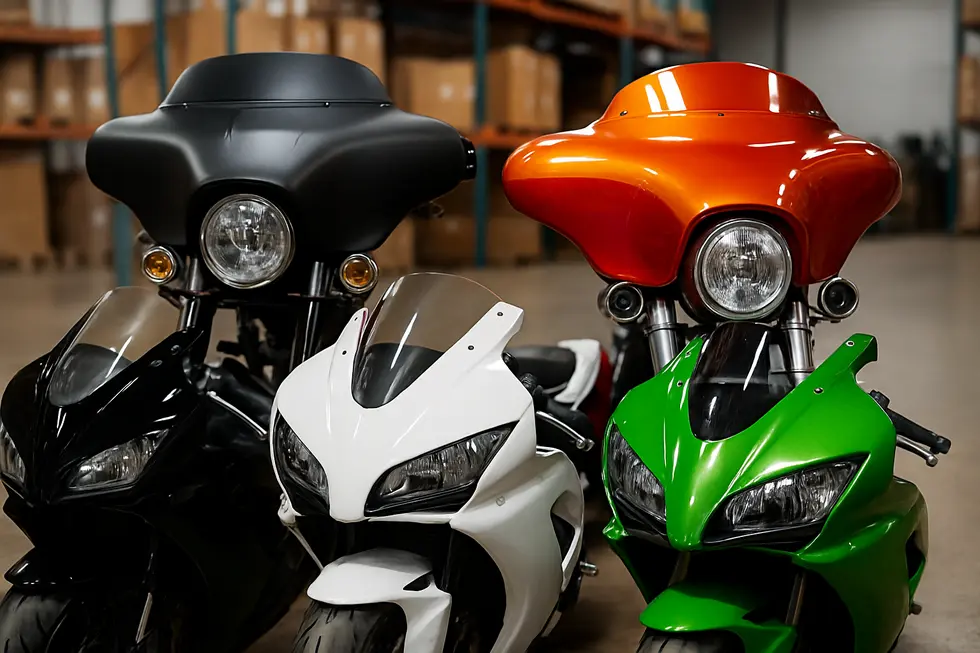
1. Distinctive Front Fairing Designs: Exploring Full, Half, and Batwing Varieties for Performance and Style
Motorcycle front fairings embody a vital blend of aerodynamic function and stylistic expression, varying widely by design to suit different riding needs and bike aesthetics. Among the primary fairing types commonly found on the market are full fairings, half fairings, and batwing fairings, each defined by unique coverage and purpose.
Full fairings provide comprehensive frontal coverage, extending from the headlight assembly down past the engine area. This type offers maximum wind protection and enhances aerodynamic efficiency, making it the preferred choice for sportbikes and long-distance touring motorcycles. The fully enclosed nature not only reduces drag but also shields the rider during higher speed riding, aiding endurance and comfort.
Half fairings present a less extensive design, typically covering only the upper front section around the headlight and forks. This style strikes a balance between wind deflection and maintaining a lighter overall weight. Riders appreciate half fairings for providing moderate protection without obscuring much of the bike’s mechanical components, preserving a more exposed, agile look favored in casual or lightweight cruising.
Batwing fairings distinguish themselves with broad, wing-like shapes fanning out from behind the handlebars. This design offers effective wind management suitable for cruisers and touring bikes, enhancing rider comfort over long distances. Simultaneously, the batwing fairing’s aesthetic roots in classic cruiser styling contribute to its enduring popularity among riders who prioritize visual impact alongside protection.
Within these broad categories, various manufacturers craft specialized kits tailored for specific models and rider preferences. Options range from compact “mini-fairings” designed for particular chassis configurations to elaborate kits that include mounting hardware and additional components like heat protection panels. These variations allow riders to customize their motorcycle’s frontal profile, optimizing for wind protection, style, or both.
Overall, choosing between full, half, and batwing fairings involves weighing the desired level of coverage, aerodynamic benefit, and stylistic expression. This diversity accommodates a wide spectrum of motorcyclists, ensuring that front fairing selection aligns closely with individual riding style and aesthetic goals. For a broader range and detailed options, riders may explore various motorcycle fairings available in today’s market.
2. Dynamic Customization of Motorcycle Front Fairings: Material Choices, Color Finishes, and Personalized Styling
Motorcycle front fairings serve not only as functional aerodynamic components but also as prime canvases for individual expression. A wide range of customization options exists, primarily spanning material selection, color finishes, and stylistic modifications, enabling riders to tailor their motorcycles to both performance and aesthetic preferences.
High-grade ABS plastic remains the most prevalent material in front fairings due to its exceptional durability, flexibility, and resistance to impacts and cracking. Its manufacturing through precise injection molding yields perfect OEM-fit parts with pre-drilled mounting points, simplifying installation. Alternatives such as fiberglass and carbon fiber finishes are also popular among enthusiasts looking for specialized looks; carbon fiber, in particular, is frequently offered as detailed paint schemes or wraps, delivering the premium aesthetic without the expense of genuine carbon fiber parts.
Customization extends vividly into coloration and surface finishes. Riders may choose from a variety of finishes including high-gloss, matte, pearl, metallic flakes, and even innovative chameleon paints that shift color based on viewing angles and lighting conditions. These finishes commonly utilize UV-protective coatings to preserve vibrancy and gloss despite prolonged sun exposure.
Beyond materials and paint, aesthetic personalization can include decals such as racing numbers, sponsor logos, stripes, and social media handles, often replicating professional race bike themes or showcasing personal flair. Many providers offer bespoke design services, allowing a personalized vision to be rendered for specific models, particularly prominent sportbikes, enhancing the identity of the machine.
Additional customization capabilities involve functional upgrades like audio-friendly inner fairings designed to house high-performance sound components without compromising sleek lines, and LED lighting enhancements including auxiliary vent lights or dynamic mirrors. Such lighting upgrades improve nighttime visibility and add striking visual accents, especially on models like Harley-Davidson motorcycles. These features typically support plug-and-play installation and meet DOT compliance regulations.
This extensive array of options ensures that motorcycle front fairings contribute significantly to both the stylistic presence and functional enhancement of the bike, all while maintaining ease of fitting and long-term durability. Riders can access highly customizable kits that include all essential parts, ready to install with expertly applied finishes and graphic options.
For a broad range of choices and personalized customization ideas, enthusiasts can explore a dedicated source for motorcycle fairings that emphasizes quality, variety, and tailored solutions. For further insights on customizing motorcycle fairings, visit Explore the Best Motorcycle Fairings at Summit Fairings.
More details about the importance and variety of durable ABS plastic fairing kits with OEM fit can be found at Kings Motorcycle Fairings’ About Us page: https://www.kingsmotorcyclefairings.com/pages/aboutus
3. Innovations in Materials and Technology Shaping Front Fairing Customization
Technological advancements have dramatically transformed motorcycle front fairings, pushing the boundaries of both performance and personalization. Modern front fairings now frequently blend lightweight composites such as ABS plastic with cutting-edge materials like carbon fiber or carbon fiber-reinforced ABS hybrids. This shift enhances durability while significantly reducing weight, which improves handling and aerodynamic efficiency.
Customization has evolved into a flexible, user-centric process. Riders can select modular fairing kits that combine multiple materials—often fiberglass for upper sections with ABS lowers—to optimize both aesthetics and functionality. These kits typically include bundled accessories such as heat shields, upgraded windscreens, and quick-access panels designed for convenient adjustments to electronic components like the ECU. Pre-drilled mounting points simplify installation, making it easier for riders to upgrade without modifications.
On the technology front, integrated instrument clusters embedded into chassis-mounted fairings mark a notable leap. These clusters offer both analog and digital readouts, providing comprehensive data including speed, tachometer, fuel level, gear position, and safety indicators. More advanced iterations incorporate Bluetooth-enabled full-color TFT displays, enabling riders to control navigation, music, and riding modes seamlessly. This integration boosts connectivity and road safety, facilitating a smarter, more informed riding experience.
These innovations are present across OEM models and aftermarket options alike. Sportbike fairings incorporate race-inspired materials and styling, while cruisers benefit from advanced suspension-compatible chassis mounts and instrumentation. This dynamic combination of material innovation, modular customization, and technological integration not only enhances aerodynamic performance and rider comfort but also elevates the motorcycle’s visual identity. For riders seeking comprehensive options, resources like exploring the best motorcycle fairings offer curated selections that embody these cutting-edge trends.
4. Economic Dynamics and Market Shifts Driven by Customization in Motorcycle Front Fairings
The motorcycle front fairing market has evolved into a dynamic landscape shaped by extensive varieties and customization options, influencing both economic trends and consumer behavior. Customization fuels the desire for personalization, encouraging riders to invest in fairings that reflect their style and riding needs. This willingness to pay for tailored designs elevates demand, benefiting manufacturers and aftermarket suppliers alike. As diverse options—from varying fairing styles to material choices—become available, competition intensifies. This often leads to innovation in design and production techniques, while scaling manufacturing processes can reduce costs, making premium fairings accessible to a broader audience.
Beyond the manufacturer’s realm, customization cultivates brand loyalty and drives customer satisfaction. Riders who customize their front fairings often engage more deeply with brands, promoting products through word-of-mouth and digital communities. Such engagement can boost market presence, enabling companies to capture niche segments and expand market share. The aftermarket sector, populated by specialists who craft unique kits and accessories, thrives by catering to riders seeking exclusivity and enhanced riding experience.
Material and technological advancements complement this economic and market activity. The introduction of stronger, lighter, and more durable materials improves fairing longevity and aesthetics, while streamlining production costs. This dual benefit attracts consumers looking for both quality and value. Progressive fabrication methods enable intricate designs and better integration with motorcycle ergonomics, further appealing to customization-conscious riders.
Altogether, the vibrant variety and customization in motorcycle front fairings not only bolster consumer choice but stimulate continuous economic activity and market evolution. For enthusiasts seeking a comprehensive selection of styles and functional options, exploring affordable motorcycle fairings at Summit Fairings offers valuable insights into this thriving sector.
Additional details on how customization elevates the rider’s experience and market influence can be found at the Burly Brand Touring Sport Fairing page: https://www.revzilla.com/motorcycle/burly-brand-touring-sport-fairing.
5. Cultural Currents Shaping the Aesthetic and Functional Evolution of Motorcycle Front Fairings
Motorcycle front fairings are deeply influenced by cultural identities and the societal values embraced by various riding communities. Styles such as Café racers, Choppers, and Streetfighters each originate from unique subcultures that prioritize distinct aesthetics and functionality. Café racers favor streamlined, minimalist fairings designed to emphasize speed and agility, reflecting the ethos of vintage racing culture. In contrast, Choppers showcase bold, aggressive front fairings that signal a rebellious spirit, often featuring exaggerated lines and custom fabrication that echo a countercultural identity.
Regional preferences profoundly shape fairing design and customization options as well. Adventure riders prioritize tough, utilitarian fairings made to endure harsh environments, with modifications enhancing comfort and protection. Meanwhile, certain geographic locales inspire signature visuals—West Coast Harley styles, for example, employ stout, culturally resonant front fairings that blend artful design with tradition.
Manufacturer responses to these cultural nuances ensure front fairings cater to broad yet specific tastes. Premium sportbike fairings combine aggressive styling with practical usability, appealing to riders seeking balance between performance and everyday functionality. The cultural symbolism of motorcycles as vehicles of personal identity fuels customization trends, encouraging riders to personalize front fairings to express individuality or community affiliation.
These dynamics result in an expansive spectrum of front fairing options, from OEM precision fits to bespoke custom kits, each shaped by the intersections of lifestyle, function, and cultural expression. This cultural interplay not only enhances the motorcycle’s aesthetic appeal but also integrates protective and practical features tailored to meet diverse rider needs.
For enthusiasts eager to explore these diverse designs and customization solutions, sources like Summit Fairings offer extensive choices to match various cultural styles and performance requirements.
Final thoughts
Motorcycle front fairings represent a vital intersection of material science, design innovation, and customer-driven customization that defines their market value and appeal. Business owners equipped with insights into ABS plastic manufacturing techniques can ensure product quality and consistency from supply chains. Recognizing the paramount role of aerodynamic and protective design sharpens product positioning to align with rider priorities. Finally, embracing extensive variety and customization options broadens market reach and satisfies a spectrum of consumer needs—from OEM replacements to unique stylistic expressions. Together, these dimensions forge a comprehensive understanding essential for thriving in the competitive motorcycle aftermarket landscape, empowering businesses to deliver durable, high-performance, and visually captivating front fairings that resonate with customers and drive sustained success.
Ready to elevate your ride? Summit Fairings delivers premium, custom-fit fairings that blend style and durability. Whether you’re chasing speed or turning heads, we’ve got your bike covered. Don’t wait—transform your machine today. Click, customize, and ride with confidence. Your perfect fairing is just a few clicks away. Act now!
About us
We are one of the leading motorcycle fairing export sites, with over 3,000 styles across almost all motorcycle models. Buy from summitfairings.com, and pay 10-40% less than the prices on other sites. If you have any questions, we promise we will have your answer within six hours.
RELATED POSTS
View all

